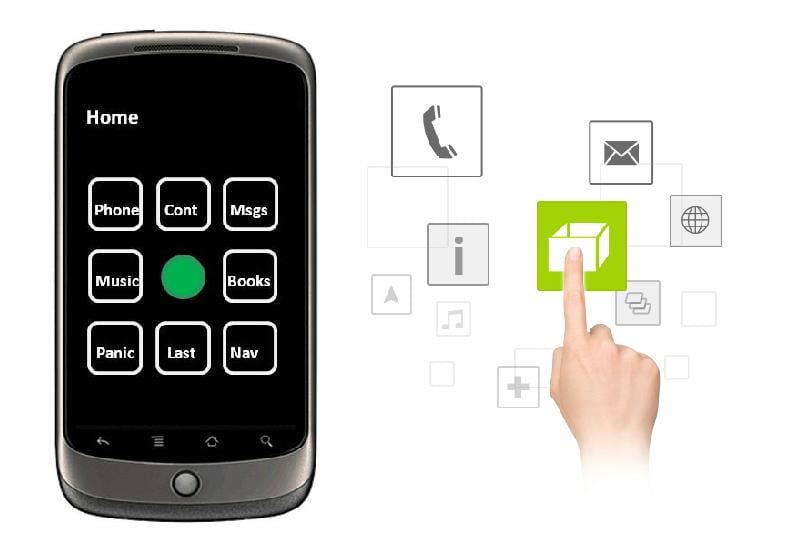The visually impaired may have been using phones adapted for them for years, but access to smartphones and more specifically apps, is still beyond reach. An Israeli company called Project Ray recently announced the development of a smartphone for the visually impaired, called the RAY.
Compatible with any Android smartphone, RAY’s user interface combines touch screen, haptics, sensors, text-to-speech and audio feedback allowing for efficient operation of the device functions.
Related articles
- Israeli Company Mobileye Developing Driverless Cars
- Will Israeli Product ‘ReWalk’ Make Wheelchairs Obsolete?
“Do you know about the raised dot on the number ‘5’ of the keypads of regular mobile phones? That dot allows the visually impaired to know where the other numbers on the keypad are located,” CEO Boaz Zilberman tells NoCamels. “In the same way, the RAY is designed around touch.”
Instead of tapping on icons on the touchscreen, RAY requires sliding motions which activate voice and vibration reactions from the smartphone, telling the user which icon their finger is on. To activate an application, all the user has to do is lift her or his finger. What facilitates this process is that any position on the touchscreen can be the starting point for selecting an application.
For some applications, customization will be possible so that users can decide how the application should be activated.
This approach is markedly different from current products, which generally work by reading out the different options on the screen without focusing on touch capability.
Adapting popular apps for the visually impaired
Like any other smartphone, the RAY could be used for messaging, email, voice recording, automatic backup and even location services. Project RAY is looking to build 15-20 adapted versions of most commonly used apps.
Sign up for our free weekly newsletter
SubscribeRAY will also combine the functions of various customized gadgets for the target population, such as audio book-readers and voice-enabled MP3 players.
Currently, the main selling point of RAY is a voice-driven application that can download audio offerings from Israel’s Central Library for the Blind, Visually Impaired and Handicapped. This is significant, because according to Zilberman, audiobooks and magazines are often the only form of entertainment for the blind.
“The system is being designed specifically for Project RAY devices and specific user identities to ensure digital rights management protection for copyrighted material,” says Amos Beer, Chief Executive Officer of the Central Library for the Blind, Visually Impaired and Handicapped. According to Beer, the application is an improvement from the current system where library users rent items by mail.
Targeting the Israeli and European markets
RAY is the result of more than two years of development by the company’s three founders, who all have backgrounds in telecommunications. Throughout the process, visually- impaired subscribers from the Central Library were involved in focus groups and trials.
The online audiobook store will be opened on November 20th. The RAY will be available in Hebrew in this month and in English this December. According to Project RAY, the device will also be sold in specialized stores so that potential buyers can receive hands-on training. The company intends to introduce the phone to the European market, most likely the UK, in the first three months of 2013.
The basic model will cost NIS 1500 ($386) and a more advanced model will cost NIS 2500 ($643).
Photo (reproduction) by Project RAY
Related posts

Editors’ & Readers’ Choice: 10 Favorite NoCamels Articles

Forward Facing: What Does The Future Hold For Israeli High-Tech?

Impact Innovation: Israeli Startups That Could Shape Our Future




Facebook comments